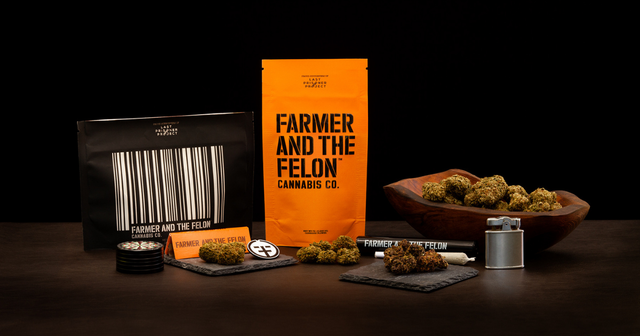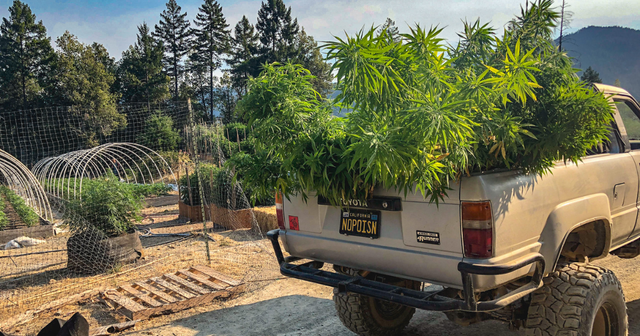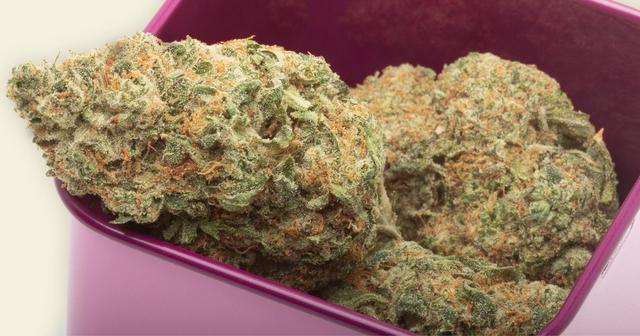Croptober Harvest at Cannacraft Farms
Croptober marks the close of the cannabis growing season. March and Ash visited Cannacraft's farms to observe the harvest process for brands like Farmer and the Felon and ABX. Story and photos by Tom Searcy.
As dew drops form and the sun rises, fog rolls out across the mountains, the atmosphere warms up, and the smell of ripe cannabis thickens the air of Sonoma County. Cultivators have spent the long hot summer protecting these plants from pests and the elements to reach their full and final potential. Harvest time has finally come. Cultivators across the Golden State are in the final stages of their growing process, cutting down and hanging their cannabis to dry for processing.
The shift in season becomes apparent in mid October, as a definite cold air pushes across the valley. The days become shorter and the buds ripen while fan leaves turn to fall colors. These plants are finished for the season, and ready to be harvested and processed for consumption. This shift in the season signals the end of the flowering stage and growing season for the year, a time which is known as Croptober.
What is Croptober?
Northern California’s gardens have reached the end of their 2021 season and the time to harvest these plants to be processed for consumption is now. Some buds are destined to be jarred up and smoked as flower while others are immediately frozen upon harvest to be utilized as fresh-frozen material for making extracts or oils.
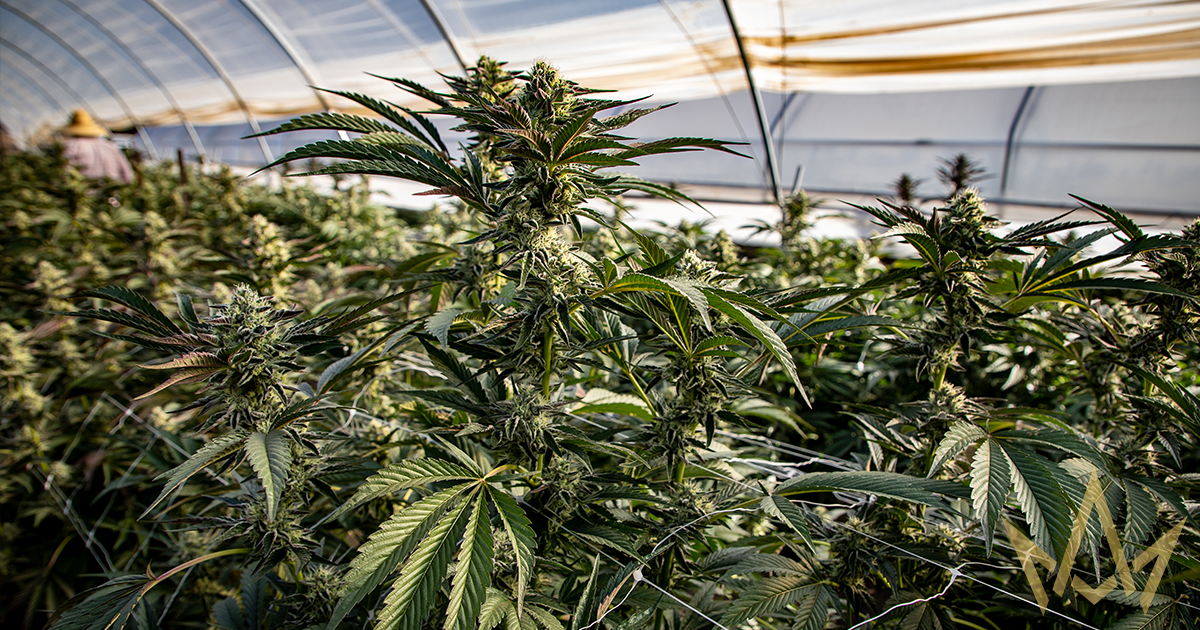
The End of the Season
As the cannabis plant reaches the end of its life cycle, the leaves and buds react to the induced flushing of nutrients and colder temperatures of the season by changing their leaf color, exactly like a tree in autumn.
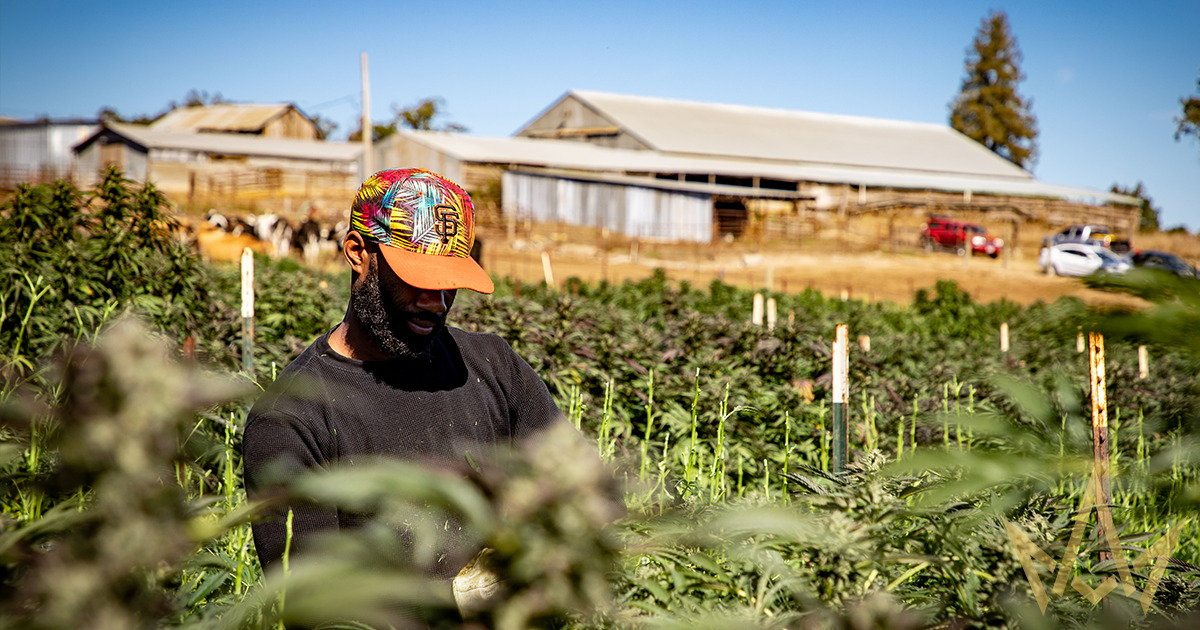
Harvesting Methods
Harvesting methods vary depending on the growing method and plant. The basic idea is to cut the stalk of the plant from the root-ball, freeing it from the ground. This is sometimes done with garden cutters or even a hand chainsaw if the stalk is thick enough. Cut plants are then transported to a warehouse, barn, or processing facility for them to be cut down to branch size and hung to dry and cure.
Keeping dust and dirt off the cut plants is a big priority, so everything is done methodically and with intention. This drying process takes around 7-10 days to complete and is an important part of maintaining the integrity of the flavor of the bud. A well-ventilated drying room is an important tool to have during harvest to keep mold from forming on curing buds.
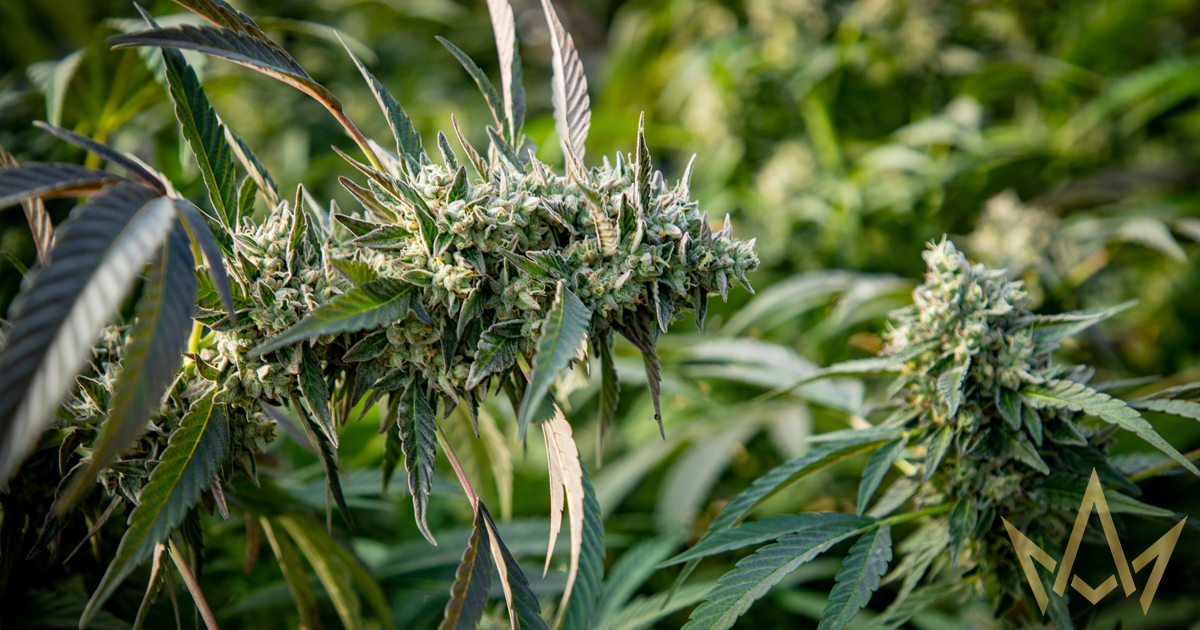
A Sticky Job
Harvesting is a sticky job. Resins from the plant material stick to skin and clothing, creating a veritable layer of hash on workers’ clothes and hands. Many farmers utilize arm protective sleeves, gloves, and eye protection while harvesting. Not only are the trichome resins sticky and hard to remove from clothes, but they can be itchy and irritating to exposed skin and downright painful to get in the eyes.
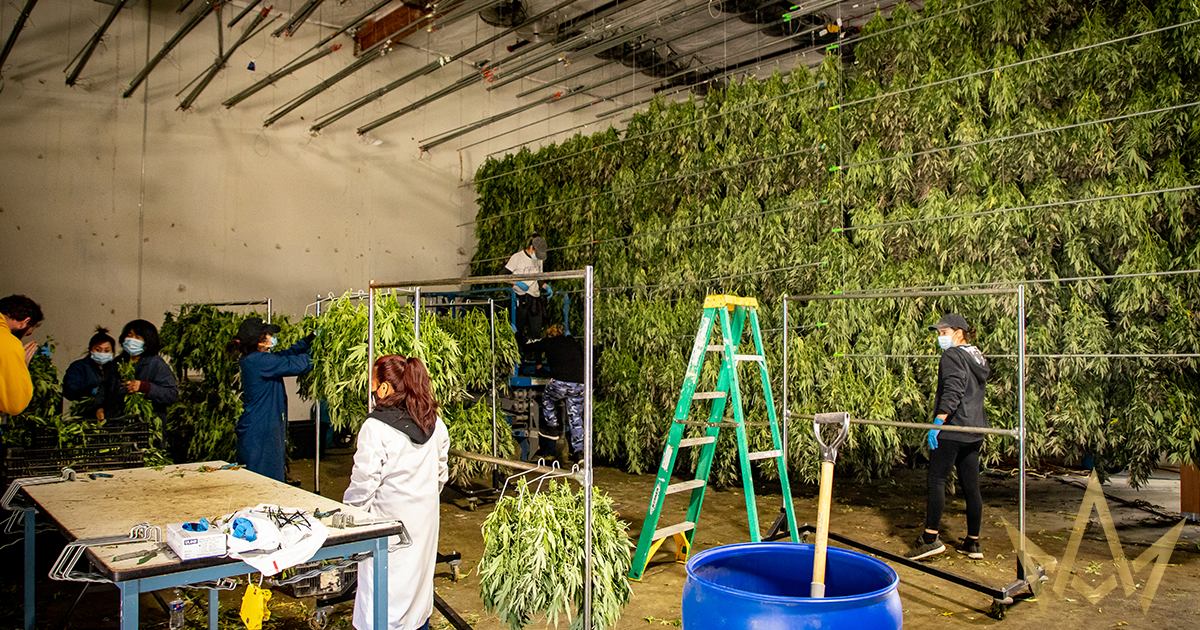
Bagged for Sale
Once these buds have dried to their optimum point of humidity percentage, they are sent on to be hand trimmed and bagged for sale. The hand trimming method is considered an artisanal method of processing the bud. Cannabis that has been hand trimmed will always have a cleaner and more appealing look to it, whereas machine trimmed buds can look a little choppy and hacked. The difference in the methods is due to the fact that the machine can nowhere near match the precision of a human trimmer.
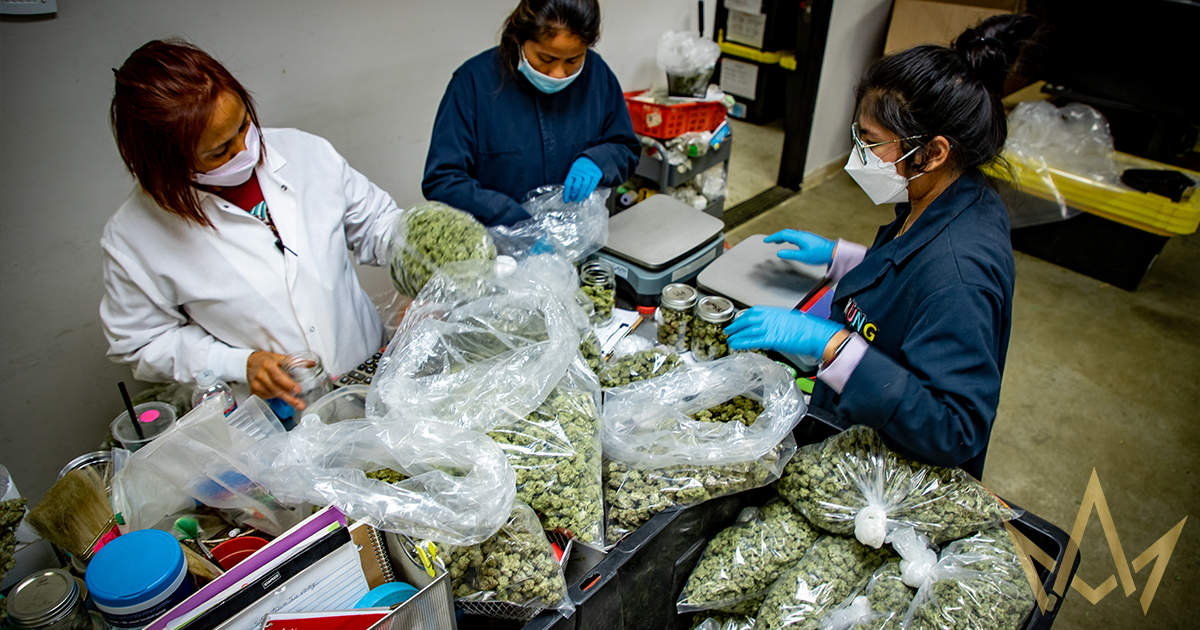
Generations of Farming
March and Ash was there for this magical time of year at the Cannacraft farms in Northern California. We got to look at cannabis in different stages of the Croptober harvest process that would be used for Cannacraft brands like Farmer and the Felon and ABX.
We took a tour with the Farmer from the Farmer and Felon, Ned, and he showed us his greenhouses to check out some of his harvest season favorites including Gary Payton, Peanut Butter Souffle, and Apples & Bananas. Not only does Ned manage endless amounts of greenhouses on these farms, but he is also a steward and custodian of the land he farms on. He makes sure to maintain and conserve the already established natural ecosystem in the area, while preserving the lands for farming for generations to come.
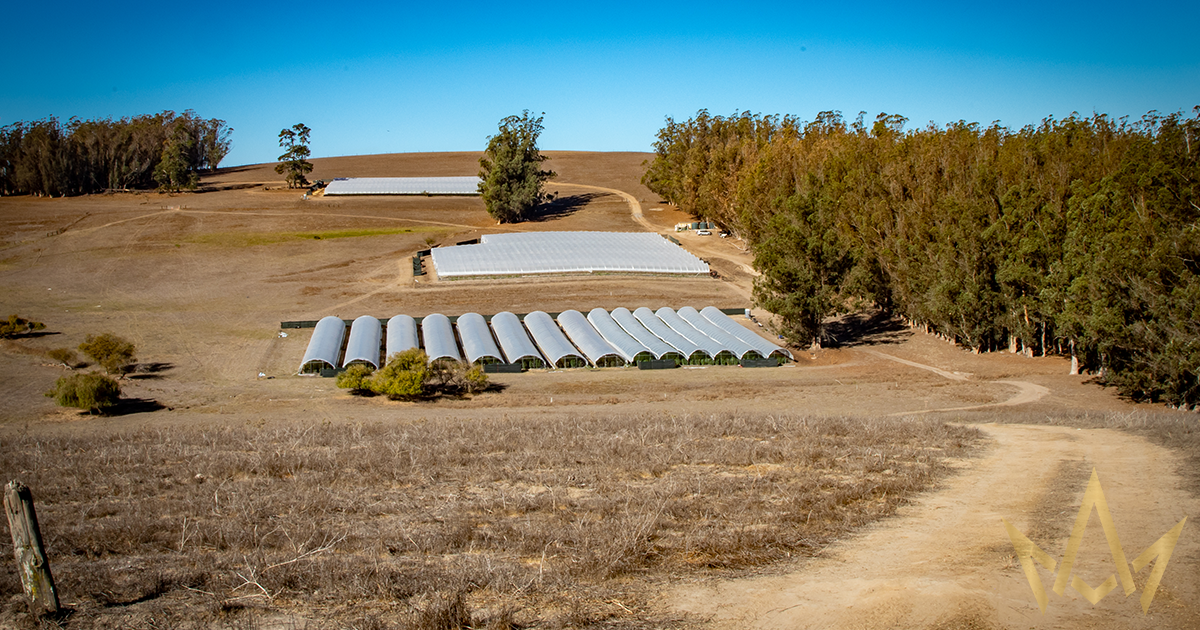
With the yearly cycle of cannabis completed, a sense of accomplishment fills the air as each farm prepares to winterize their property. Winterizing is the process of disassembling greenhouses, cages, and trellis so as not to be damaged by winter weather, while also planting a cover crop for the winter to keep the soil biology balanced. These preparations are made in anticipation of next year's season that starts in early spring. Croptober marks the close of the cannabis growing season, and is a milestone for completing another agricultural season, an accomplishment that fills the atmosphere here in the great state of California.
DISCLAIMER: THIS SITE DOES NOT PROVIDE MEDICAL ADVICE.
All information, including but not limited to, text, graphics, images and other materials contained on this site are for informational purposes only. No text, graphics, images or other materials on this site are intended to be professional medical advice or a substitute for professional medical advice, diagnosis or treatment. Always seek the advice of your physician or other qualified health care provider with any questions you may have regarding a medical condition or treatment and before undertaking a new health care regimen, and never disregard professional medical advice or delay in seeking professional medical advice because of something you have viewed on this site.
DISCLAIMER: THIS SITE DOES NOT PROVIDE MEDICAL ADVICE.
All information, including but not limited to, text, graphics, images and other materials contained on this site are for informational purposes only. No text, graphics, images or other materials on this site are intended to be professional medical advice or a substitute for professional medical advice, diagnosis or treatment. Always seek the advice of your physician or other qualified health care provider with any questions you may have regarding a medical condition or treatment and before undertaking a new health care regimen, and never disregard professional medical advice or delay in seeking professional medical advice because of something you have viewed on this site.